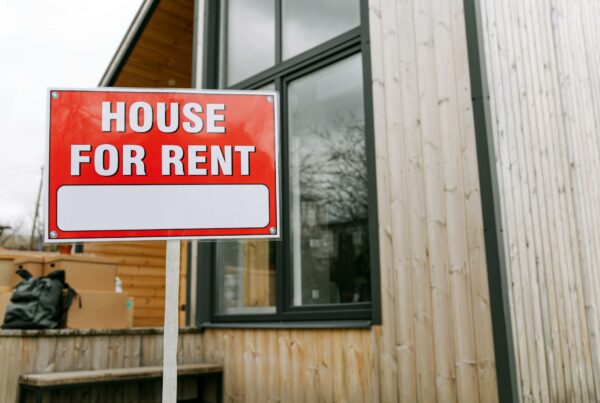Last Updated on April 28, 2023
In today’s ever-evolving world of real estate, the quest for the perfect home often goes hand-in-hand with securing the ideal mortgage. With countless options at every turn, the journey can seem overwhelming. Fear not, for we have crafted the ultimate guide to help you navigate the often-misunderstood realm of conventional mortgage loans.
This article delves into the nuances of conventional mortgage loans, equipping you with the essential knowledge to decide and secure your dream home. Whether you’re a first-time homebuyer or a seasoned investor, understanding the ins and outs of conventional mortgage loans could be the key to unlocking the door to your perfect abode.
What Are Conventional Mortgage Loans?
Conventional mortgage loans are a type of home financing offered by private lenders, such as banks, credit unions, and mortgage companies. Unlike government-backed loans, conventional loans are not insured or guaranteed by any government entity. This means that the lender assumes more risk when offering a conventional loan. But it also grants them greater flexibility in tailoring the loan’s terms and conditions to suit the borrower’s unique financial situation.
One of the key advantages of conventional mortgage loans is that they are highly customizable. This allows borrowers to choose from a wide range of loan terms, interest rates, and down payment options. This versatility makes conventional loans an attractive choice for many homebuyers looking to make a smaller down payment or seeking the stability of a long-term, fixed-rate loan. If you want to learn more about conventional mortgage loans, you can check out https://mortgage.shop/conventional-mortgage-loans/ and other sites like it.
Types Of Conventional Loans
As you embark on your real estate journey, you must understand the various types of conventional mortgage loans available to you. With this knowledge, you’ll be better equipped to find the perfect match for your financial situation and homeownership goals. In this section, we’ll explore the most common types of conventional loans and weigh their pros and cons to help you make an informed decision.
Fixed-Rate Mortgage (FRM)
A fixed-rate mortgage is a conventional loan with an interest rate that remains the same for the entire loan duration. This offers predictability in monthly payments, allowing borrowers to budget more effectively. Fixed-rate mortgages are typically available in 15, 20, or 30-year terms.
Pros:
- Stable monthly payments
- Protection against rising interest rates
- Easy to understand and budget for
Cons:
- Higher initial interest rate compared to adjustable-rate mortgages
- Less flexibility in terms of refinancing or early repayment
Adjustable-Rate Mortgage (ARM)
An adjustable-rate mortgage features an interest rate that fluctuates over time based on market conditions. ARMs usually begin with a lower initial interest rate, which is fixed for a predetermined period (e.g., 5 or 7 years). After this initial period, the rate adjusts periodically, typically annually, according to a pre-established index.
Pros:
- Lower initial interest rate
- Potential for lower overall interest payments if rates decrease
- It may be easier to qualify for due to lower initial payments
Cons:
- Unpredictable monthly payments after the initial fixed-rate period
- Risk of higher interest rates and payments in the future
- More complex than fixed-rate mortgages
Conforming vs. Non-Conforming Loans
Conventional loans are further divided into conforming and non-conforming loans. Conforming loans adhere to the underwriting guidelines and loan limits set by government-sponsored enterprises that buy and guarantee mortgages. Non-conforming loans, on the other hand, do not meet these guidelines and are typically used for borrowers who need a larger loan amount (also known as jumbo loans) or have unique financial situations.
Pros of Conforming Loans:
- Lower interest rates
- Easier to sell on the secondary market, providing stability for lenders
- More accessible to a wider range of borrowers
Cons of Conforming Loans:
- Loan limits may restrict financing options for high-priced properties
- Stricter underwriting guidelines may exclude some borrowers
Pros of Non-Conforming Loans:
- Flexibility for larger loan amounts or unique financial situations
- Can be customized to meet specific borrower needs
Cons of Non-Conforming Loans:
- Higher interest rates
- Stricter qualification requirements, such as higher credit scores and larger down payments

Benefits of Choosing a Conventional Mortgage Loan
As you explore your home financing options, it’s essential to recognize the array of advantages that conventional mortgage loans offer. These benefits can make them an appealing choice for borrowers with diverse financial situations and homeownership goals. In this section, we’ll highlight the key benefits that conventional loans provide, which can aid you in determining if this mortgage option is the right fit for your needs.
Flexible Down Payment Options
Conventional loans offer a range of down payment options, typically starting from as low as 3% and going up to 20% or more. This flexibility allows homebuyers to tailor their mortgage to their financial circumstances. Moreover, it can help reduce the overall cost of borrowing. A larger down payment can also eliminate the need for private mortgage insurance (PMI), further lowering monthly payments.
Interest Rate and Loan Term Choices
When it comes to conventional loans, borrowers can choose from various interest rate options, including fixed-rate and adjustable-rate mortgages. This allows you to select a mortgage that aligns with your financial goals and risk tolerance. Additionally, conventional loans offer multiple loan terms, such as 15, 20, or 30 years, providing further customization options to suit your budget and desired payoff timeline.
No Government Insurance Premiums
Unlike government-backed loans, such as FHA or USDA loans, conventional mortgage loans do not require upfront or ongoing mortgage insurance premiums paid to the government. This can result in significant savings over the life of the loan and lower monthly payments, particularly for borrowers with strong credit scores and larger down payments.
Greater Lender Flexibility
As conventional loans are not subject to strict government guidelines, lenders have more freedom to customize loan terms and conditions. This flexibility can be advantageous for borrowers with unique financial situations, as it enables lenders to consider various factors when underwriting and approving loans.
Refinancing Opportunities
Conventional loans offer a streamlined refinancing process that allows borrowers to refinance their mortgages with fewer fees and documentation requirements. This can be a valuable option for those looking to take advantage of lower interest rates or change their loan terms to better suit their financial goals.
Potential for Home Equity Access
Conventional loans can provide borrowers with the opportunity to build home equity over time as they make regular payments and the property appreciates in value. This equity can then be accessed through home equity loans or lines of credit, providing financial flexibility and an additional resource for funding home improvements, consolidating debt, or addressing other financial needs.

Comparing Conventional Mortgage Loans to Other Mortgage Options
While conventional mortgage loans offer numerous benefits and flexibility for many homebuyers, it’s crucial to understand how they stack up against other mortgage options available in the market. By comparing conventional loans with government-backed loans and other alternatives, you can make an informed decision that best suits your needs and financial situation.
Conventional vs. FHA Loans
Federal Housing Administration (FHA) loans are government-backed mortgages designed to make homeownership more accessible for individuals with lower credit scores or limited funds for a down payment.
Key differences:
- Conventional loans typically require a higher credit score (620+) compared to FHA loans (500+ with a 10% down payment, 580+ with a 3.5% down payment).
- FHA loans allow for lower down payments (as low as 3.5%) than conventional loans (usually 5% to 20%).
- Conventional loans have no upfront mortgage insurance premium. In contrast, FHA loans require an upfront mortgage insurance premium (UFMIP) of 1.75% of the loan amount.
- Conventional loans may have lower overall mortgage insurance costs, especially for borrowers with high credit scores or those who can make a larger down payment.
Conventional vs. VA Loans
Department of Veterans Affairs (VA) loans are government-backed mortgages available exclusively to eligible active-duty service members, veterans, and their surviving spouses. VA loans aim to provide affordable financing options for those who have served their country.
Key differences:
- VA loans offer 100% financing with no down payment required, while conventional loans typically require a down payment of at least 5%.
- VA loans do not require private mortgage insurance (PMI), potentially saving borrowers a significant amount over the life of the loan.
- Conventional loans are available to all eligible borrowers, whereas VA loans are exclusive to qualified military personnel and their families.
- VA loans may have lower interest rates than conventional loans, depending on the borrower’s credit score and other factors.
Conventional vs. USDA Loans
United States Department of Agriculture (USDA) loans are government-backed mortgages designed to promote homeownership in rural areas. The USDA offers low-interest loans, with no down payment requirements and low closing costs.
Key differences:
- USDA loans are geographically restricted to designated rural and suburban areas, while conventional loans have no such restrictions.
- Conventional loans require a down payment, whereas USDA loans offer 100% financing with no down payment required.
- USDA loans have income limits based on the borrower’s location and household size. In contrast, conventional loans do not impose income limits.
- Conventional loans are more widely available through various private lenders. In contrast, USDA loans are offered through a limited number of approved lenders.
Navigating the World of Conventional Mortgage Loans
As we’ve explored throughout this guide, conventional mortgage loans offer a diverse range of options and benefits, catering to homebuyers with varying financial situations and homeownership goals. From understanding the different types of conventional loans to comparing them with alternative mortgage options, you are now better equipped to make informed decisions about your home financing journey.
Keep in mind that while conventional loans provide a myriad of advantages, it’s crucial to carefully consider your individual needs and long-term objectives before committing to a mortgage. Consulting with experienced mortgage professionals will help you navigate the complexities of the loan process, ensuring you make the best choices for your unique circumstances.





